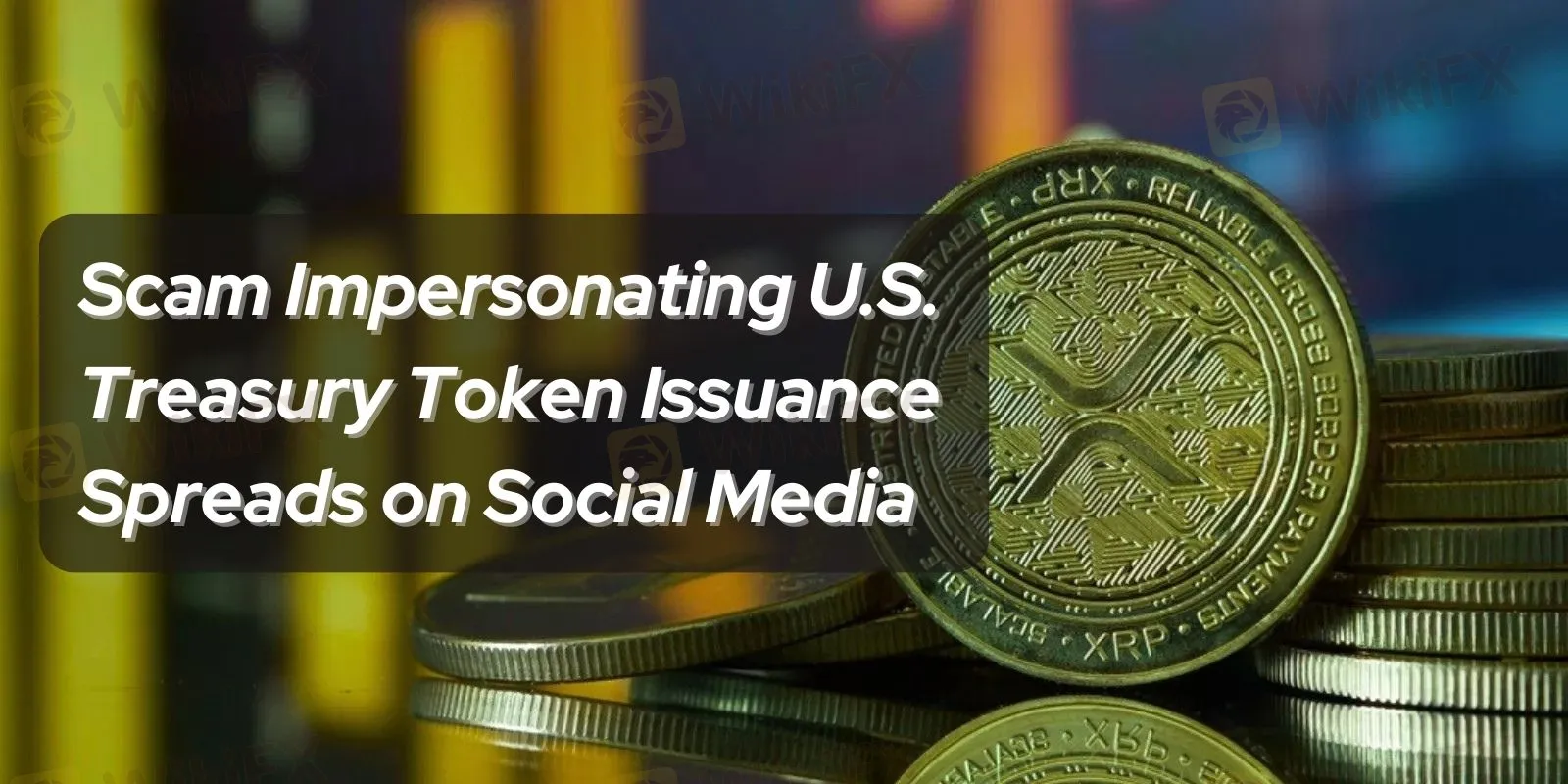简体中文
繁體中文
English
Pусский
日本語
ภาษาไทย
Tiếng Việt
Bahasa Indonesia
Español
हिन्दी
Filippiiniläinen
Français
Deutsch
Português
Türkçe
한국어
العربية
Scam Impersonating U.S. Treasury Token Issuance Spreads on Social Media
Abstract:A social media scam falsely claimed the US Treasury created an XRP wallet, exploiting misinformation and targeting crypto newcomers with fabricated credibility.

In January 2025, a new social media scam surfaced, falsely claiming that the US Treasury had created an XRP wallet. Despite obvious red flags, this hoax spread rapidly across platforms like X (formerly Twitter), fueled by major accounts amplifying the misinformation. The incident underscores the vulnerability of the crypto space to scams, particularly targeting inexperienced investors.
Unpacking the XRP Wallet Scam
The scam originated from accounts allegedly based in the Philippines, where individuals impersonated the US Treasury and claimed the creation of an XRP wallet. The wallet supposedly interacted with major financial institutions like Bank of America and JPMorgan, lending an air of credibility to the hoax. However, on-chain analysis quickly revealed that the wallet was neither affiliated with the US Treasury nor based in the United States.
The timing of the scam played into existing narratives. Since former President Trump‘s endorsement of a US Bitcoin Reserve and several states pursuing their own Bitcoin reserves, some speculated that the Treasury might also explore cryptocurrency investments. Coupled with XRP’s recent price surge, these factors made the hoax appear plausible to some in the community.
Targeting Vulnerable Investors
This scam highlighted a critical issue: the susceptibility of crypto newcomers to misinformation. Reports suggest that nearly half of TRUMP meme coin holders are first-time crypto investors. Without prior experience or knowledge, many fall prey to scams that appear credible due to verified accounts or trending narratives.
Zach Rynes, a Chainlink Community Liaison, pointed out that trained eyes could easily identify the red flags. However, he noted the difficulty of combating such hoaxes in a decentralized, fast-paced environment. The scam underscores the need for robust education and vigilance within the crypto community.
Recognizing the Nature of Scams
The XRP wallet scam underscores the importance of understanding the common characteristics of crypto scams. These schemes often use fabricated connections to reputable institutions, like the US Treasury in this case, to mislead and exploit trust. Identifying such red flags and cross-checking information with official sources are crucial steps in avoiding deception.
Disclaimer:
The views in this article only represent the author's personal views, and do not constitute investment advice on this platform. This platform does not guarantee the accuracy, completeness and timeliness of the information in the article, and will not be liable for any loss caused by the use of or reliance on the information in the article.
Read more

Think Scams Won’t Happen to You? That’s Exactly What Scammers Count On
We live in a world where information is everywhere. People are more digitally literate than ever before. Financial education is just a few clicks away. And yet, investment scams are not going away but they’re getting worse. It’s tempting to think that only the gullible fall for these tricks. But that’s far from the truth. Why? Because investment scams don’t target your knowledge. They target your emotions.

Crypto Traders Hit by Scam Using Fake Regulatory Documents, MFSA Cautions
Fraudsters are using MFSA-branded fake documents to scam crypto users, as impersonation of regulators rises globally and document-based scams grow increasingly sophisticated.

Hong Kong Warns of CBEX Group Fraud Amid Nigerian Outrage
Hong Kong's 2024 alert revealed CBEX Group's fraudulent activities, misleading investors in Nigeria and beyond. Many face significant financial losses and withdrawal issues.

AMF and ACPR Warn Against 23 Unauthorized Forex and Crypto Platforms
French regulators have flagged 23 new websites for offering unauthorized Forex and crypto-derivative services.These platforms, which lack the necessary licenses, continue to target local investors with aggressive marketing and unrealistic profit promises. Authorities warn that many of these sites use misleading branding and domain names to appear credible.
WikiFX Broker
Latest News
Five UK Financial Firms Collapse, FSCS Offers Support for Affected Clients
Why Trade Agreements Matter to Nations
Non-Existent Online Scheme Took Away RM580,000
RM15 Million Gone in Fake Investment Scam
Think Scams Won’t Happen to You? That’s Exactly What Scammers Count On
Crypto Traders Hit by Scam Using Fake Regulatory Documents, MFSA Cautions
Trade Fights Are Heating Up—What Happens Next?
Juno Markets Upgrades to FYNXT PAMM
Beware of New Scam Tactics Lurking on WhatsApp!!
Italy’s CONSOB Blocks Sites of ITradingFX and NEX TRADE in Latest Crackdown
Currency Calculator


